Tunisia
Playing Cards in Tunisia. Chkobba is one of the most popular card games in Tunisia, mainly played by men in coffee shops but also played at home by men and women alike.
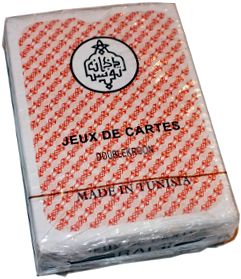
Playing Cards in Tunisia
Gambling was prohibited in Tunisia until after World War 1 and this probably stifled any local production. The 1st law organizing the tobacco sector in Tunisia appeared in 1898 and matches, salt and playing cards were subsequently added (c.1920) to products managed by the monopoly more →. Playing cards in Tunisia have followed French influence, and many packs for Tunisia have been made in Belgium, but cards currently on sale appear to be standard Anglo-American Bridge or Poker packs sold in tobacco shops, as well as souvenir packs made in China. Locally produced packs usually carry a tax stamp of some kind and since the 1970s they have an imprint, usually on the Ace of Diamonds, which refers to the playing card monopoly.
Right: cello-wrapped box from "Jeux de Cartes RAMI" made in Tunisia, 2012 →
The ‘Rami’ deck shown below is presumably a pun on the game Rummy.
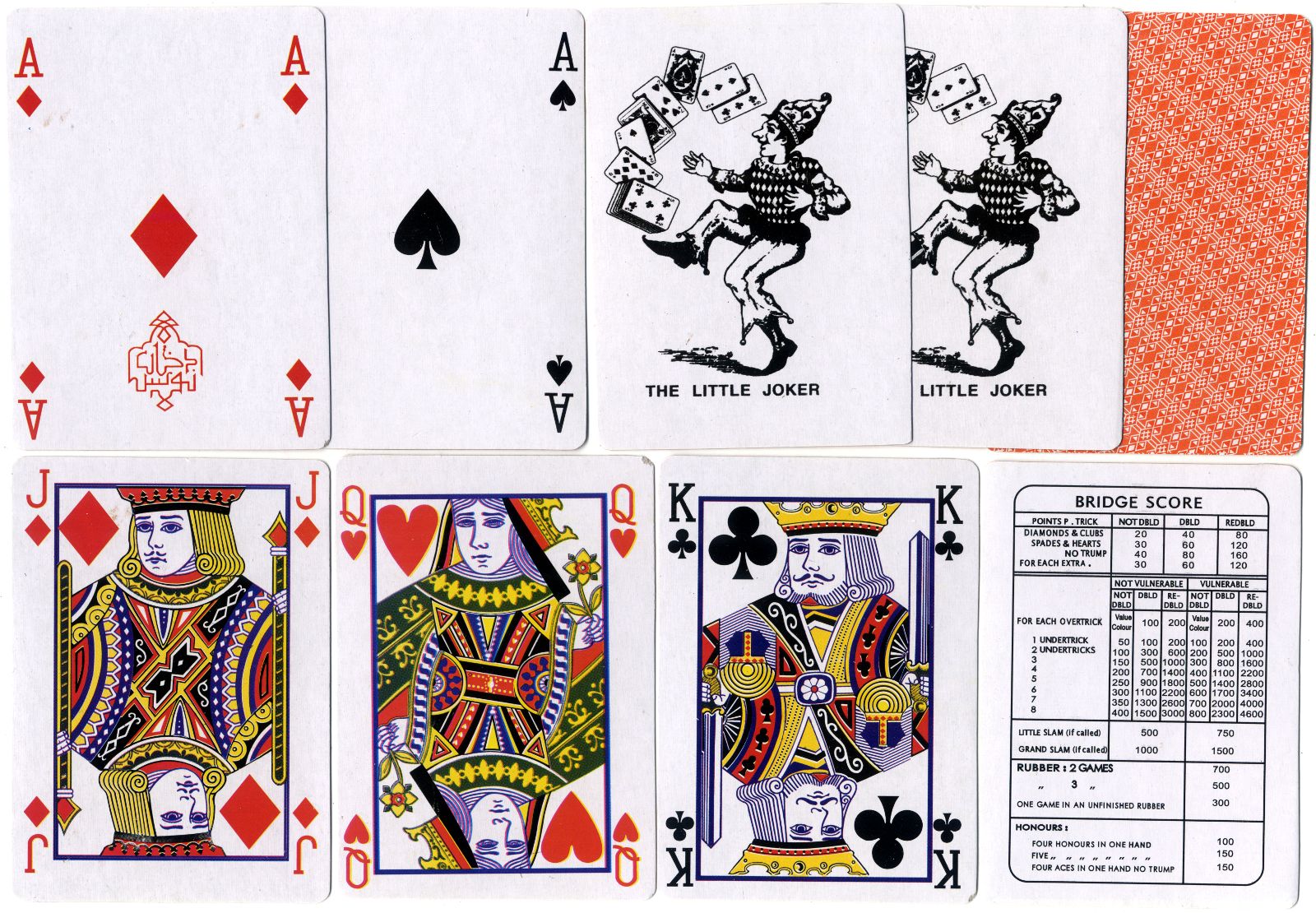
Above: 'Rami' playing cards made in Tunisia (2012), with standard Anglo-American courts and two 'Little Jokers'. The imprint of the national tobacco and playing card monopoly can be seen on the Ace of Diamonds. 52 cards + 2 Jokers + Bridge score card in box. 'Rami' playing cards seem to have been in production for several decades.
Note: The Tunisian state has a monopoly on the sale of playing cards. Following the French example, the Régie des Monopoles Tunisiens or RMT manages the monopoly. This service is a part of the Régie Nationale des Tabacs et des Allumettes in Tunis. Importation of cards was allowed provided a tax was paid. The cards for Tunisia were printed mostly in Turnhout, but also by F. Piatnik in Vienna. Previously, RMT issued annual tenders, but since 1986 it became autonomous.
Earlier examples
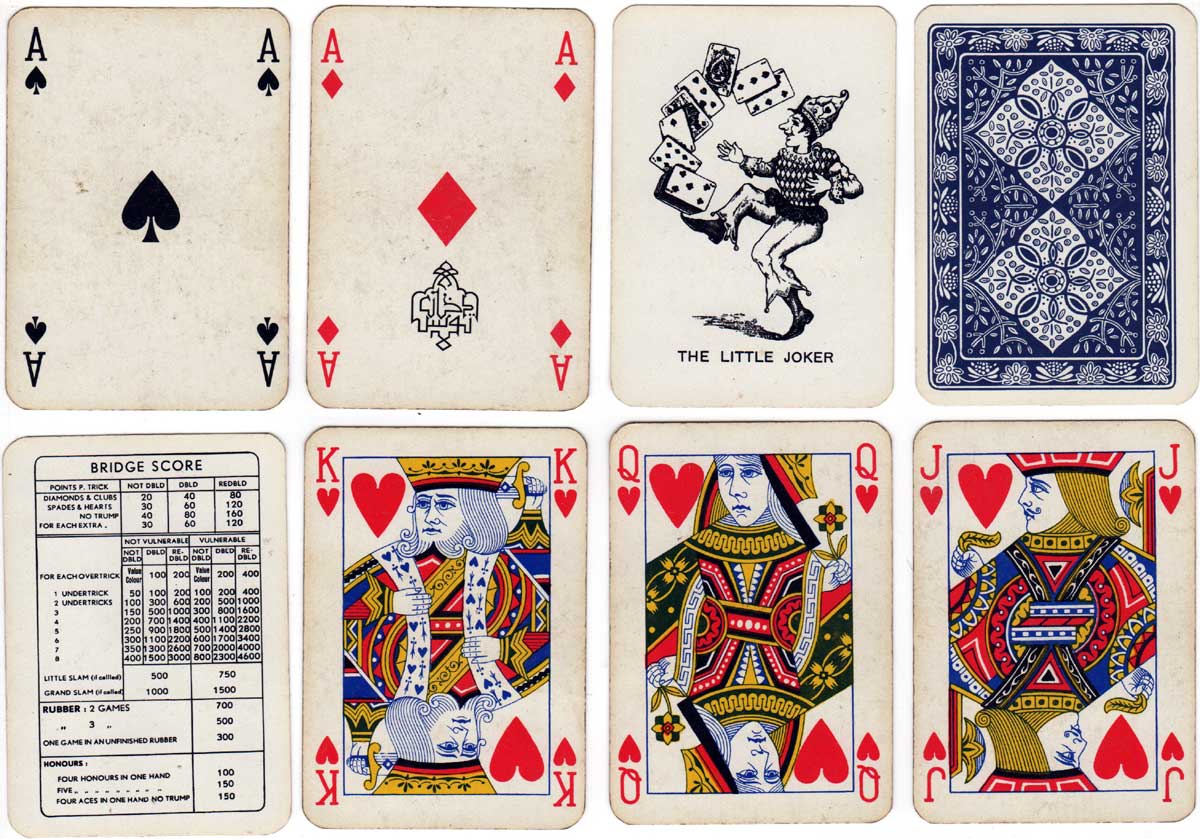
Above: ‘Double Kroon’ playing cards made in Belgium for Tunisia, probably by Mesmaekers c.1960. Image courtesy Matt Probert.
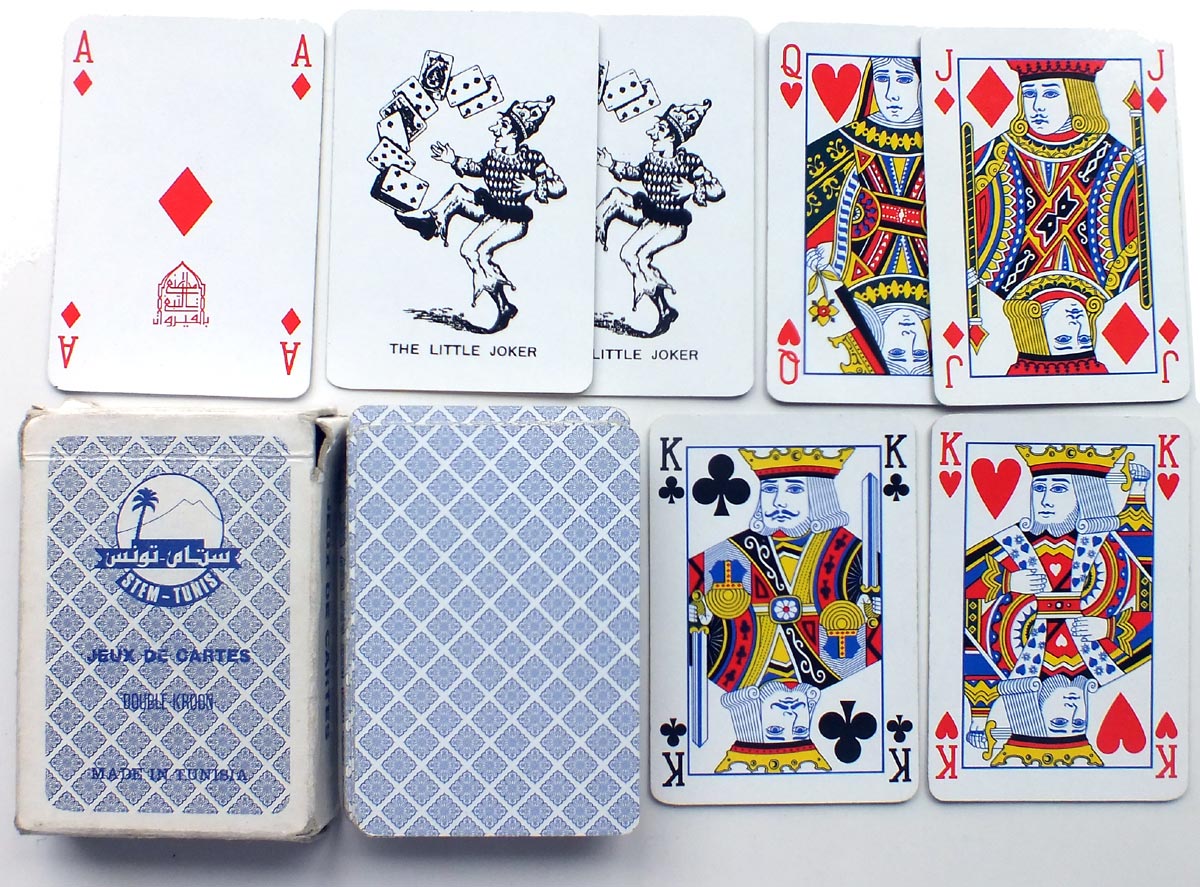
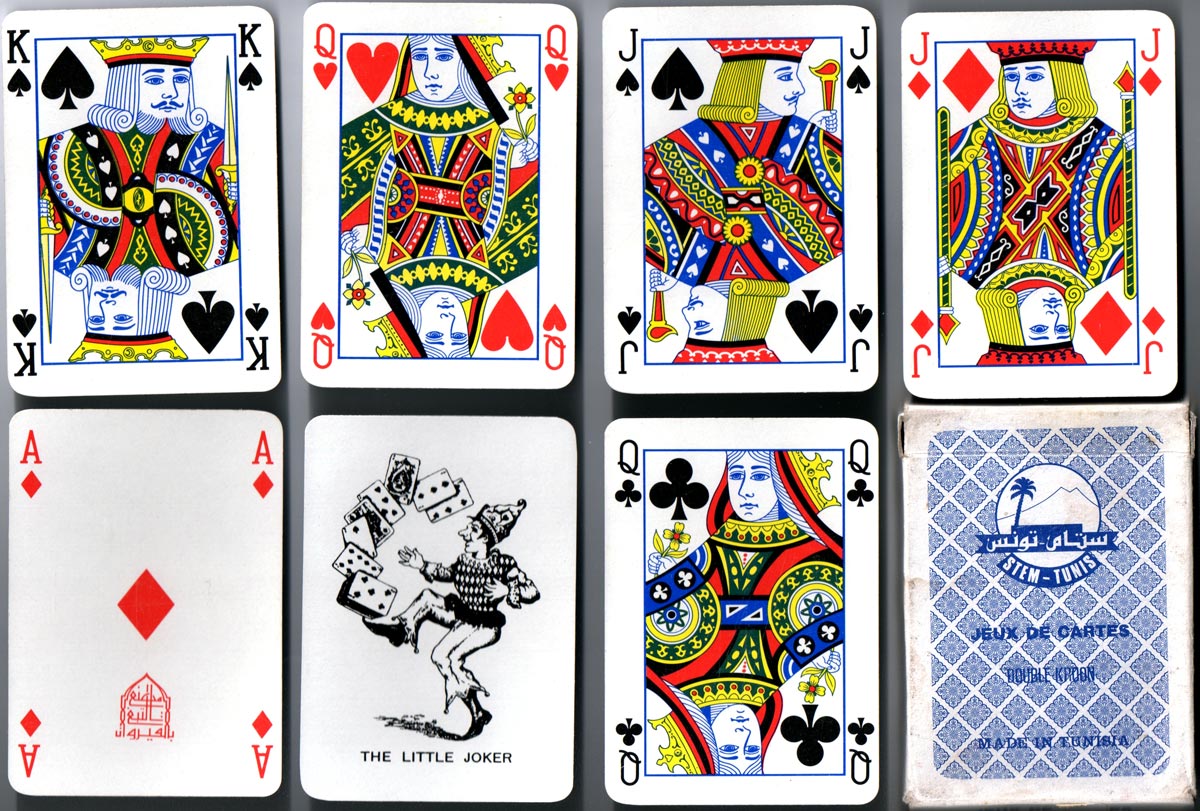
Above: 'Rami' playing cards made in Tunisia, c.1975. See also: STEM (Société Tunisienne des Emballages Modernes) website→
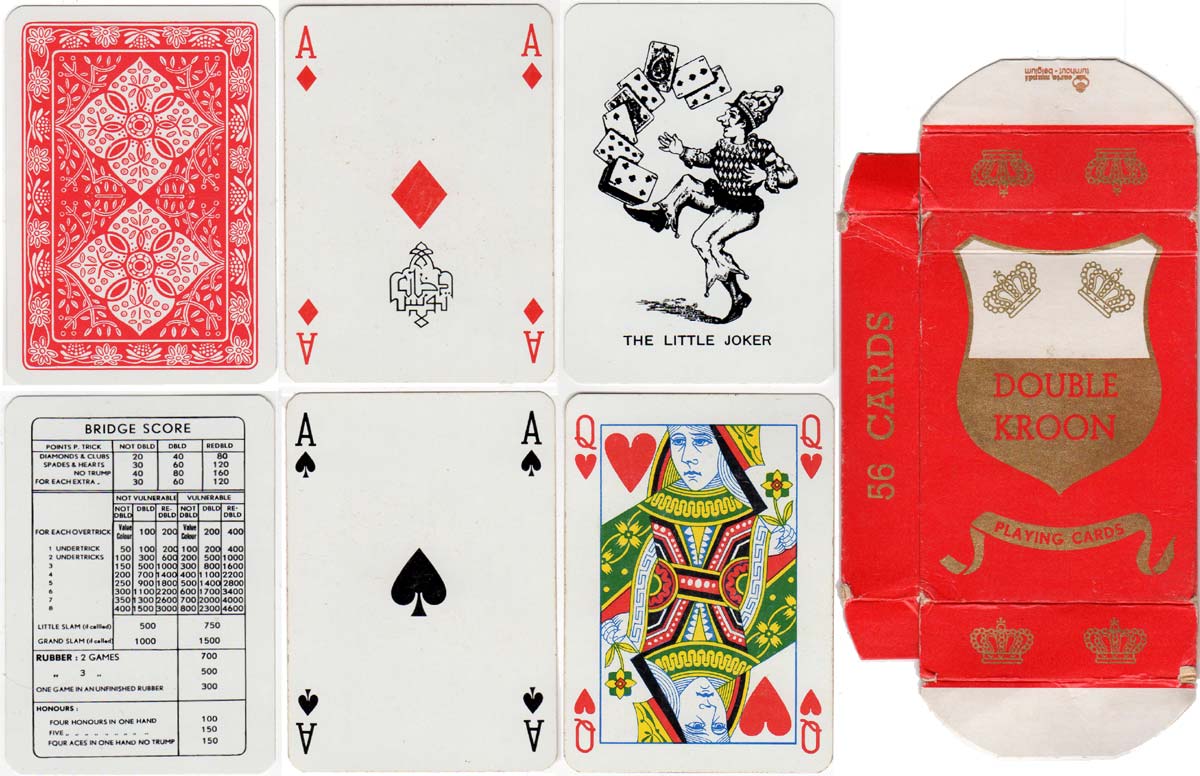
Above: ‘Double Kroon’ for Tunisia made in Belgium by Carta Mundi. 52 cards + 3 jokers + bridge scores card in box. Image courtesy Matt Probert.
In hot weather Tunisian men sit around with their shirts off playing cards in the cafés. Chkobba is one of the most popular card games in Tunisia, mainly played by men in coffee shops but also played at home by men and women alike.
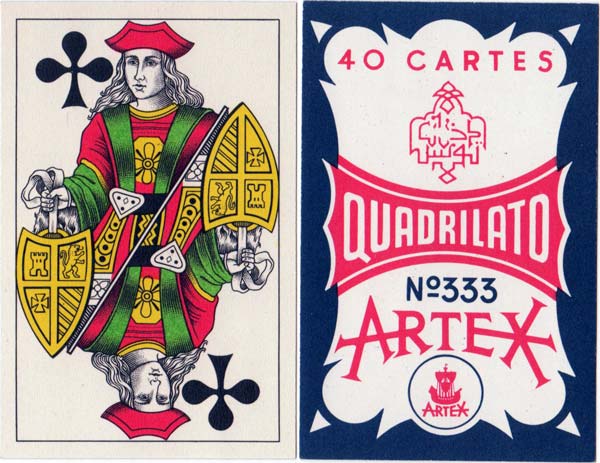
Above: Artex Quadrilato No.333 for Tunisia, c.1970
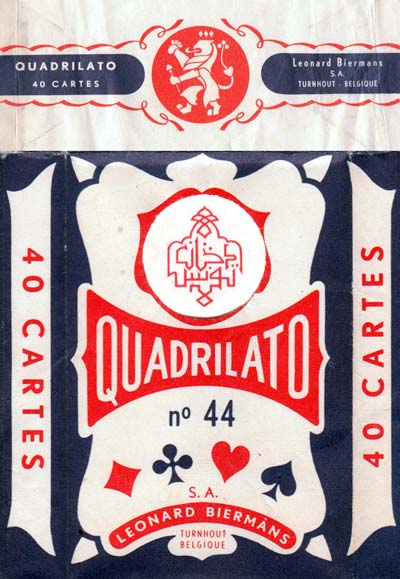
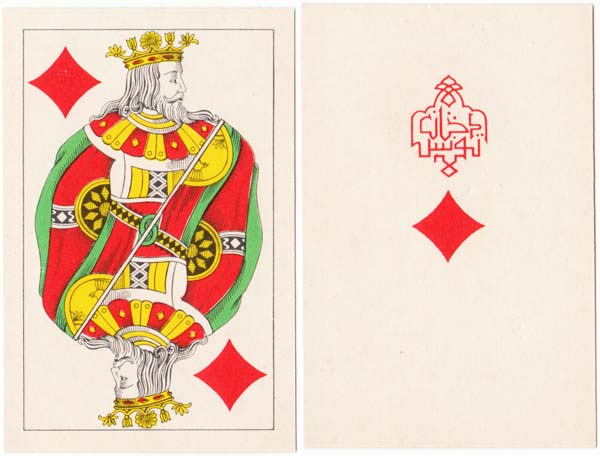
Above: “Quadrilato No.44” Genoese style playing cards manufactured by Leonard Biermans S.A. for Tunisia, c.1970.
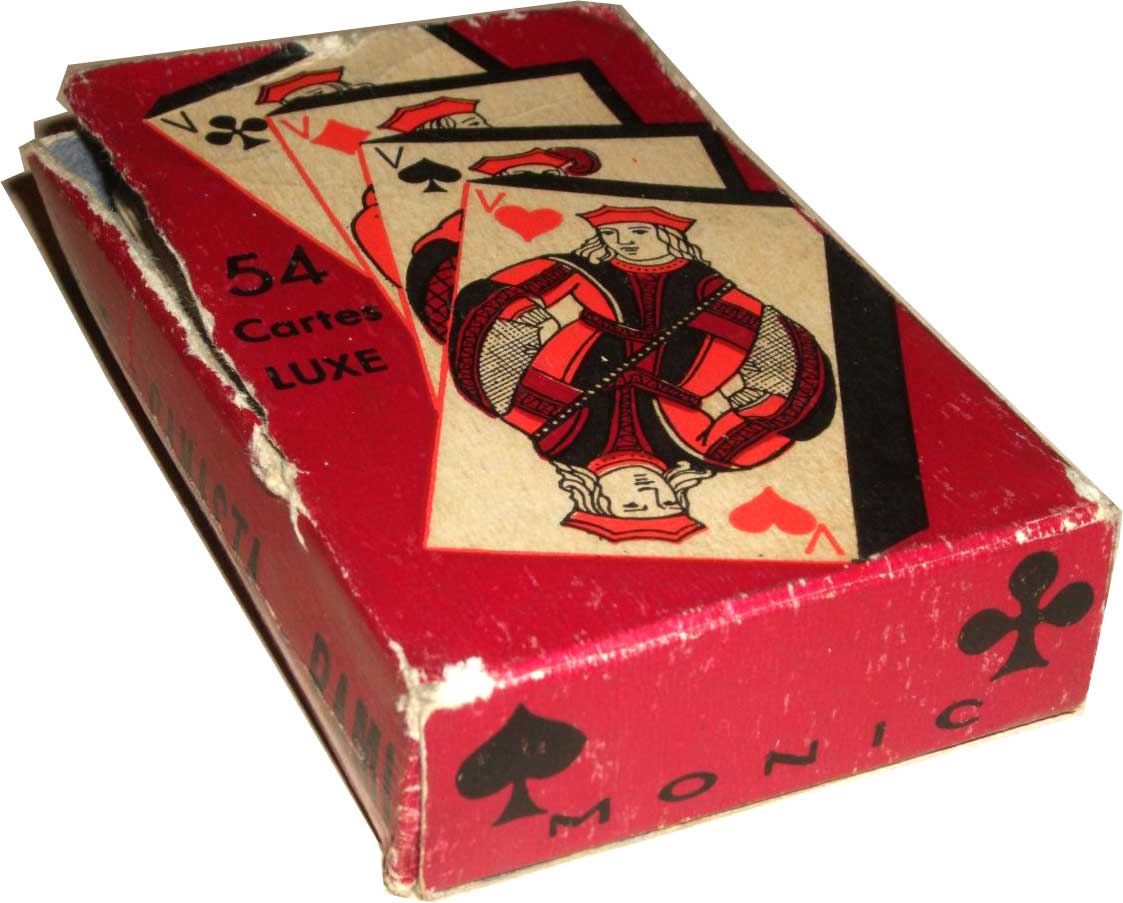
Above: ‘Monic’ brand playing cards. Dates and manufacturer uncertain, possibly c.1920s.
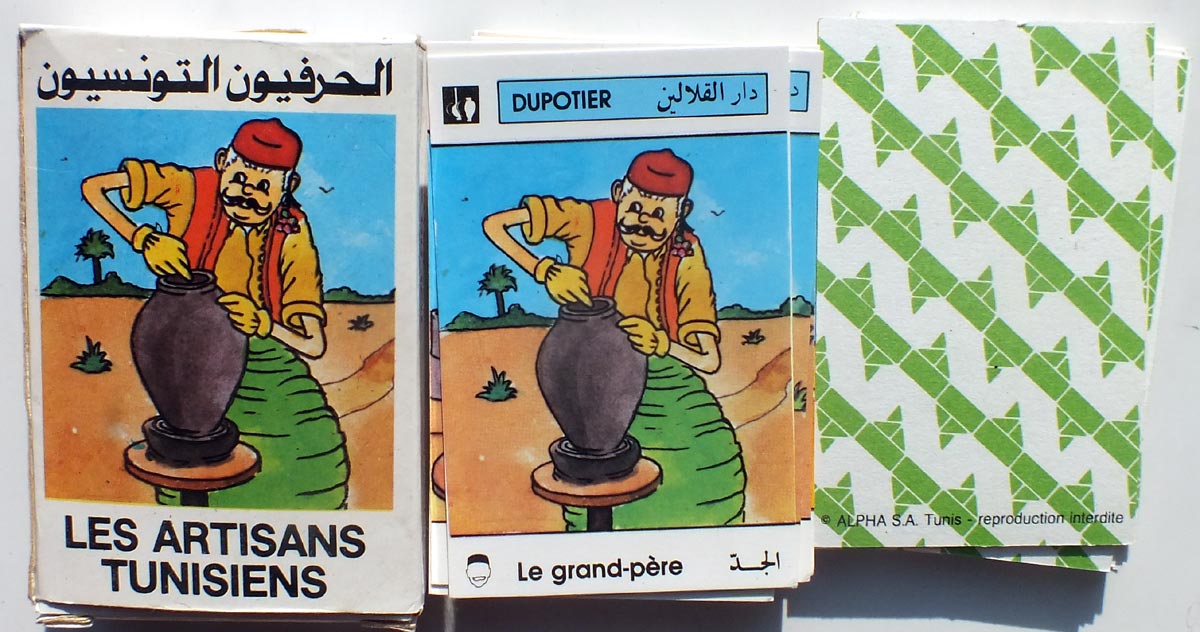
Above: “Les Artisans Tunisiens” Jeu de Sept Familles published by Éditions de la Mediterranée, Alpha S.A., Tunis, c.1980
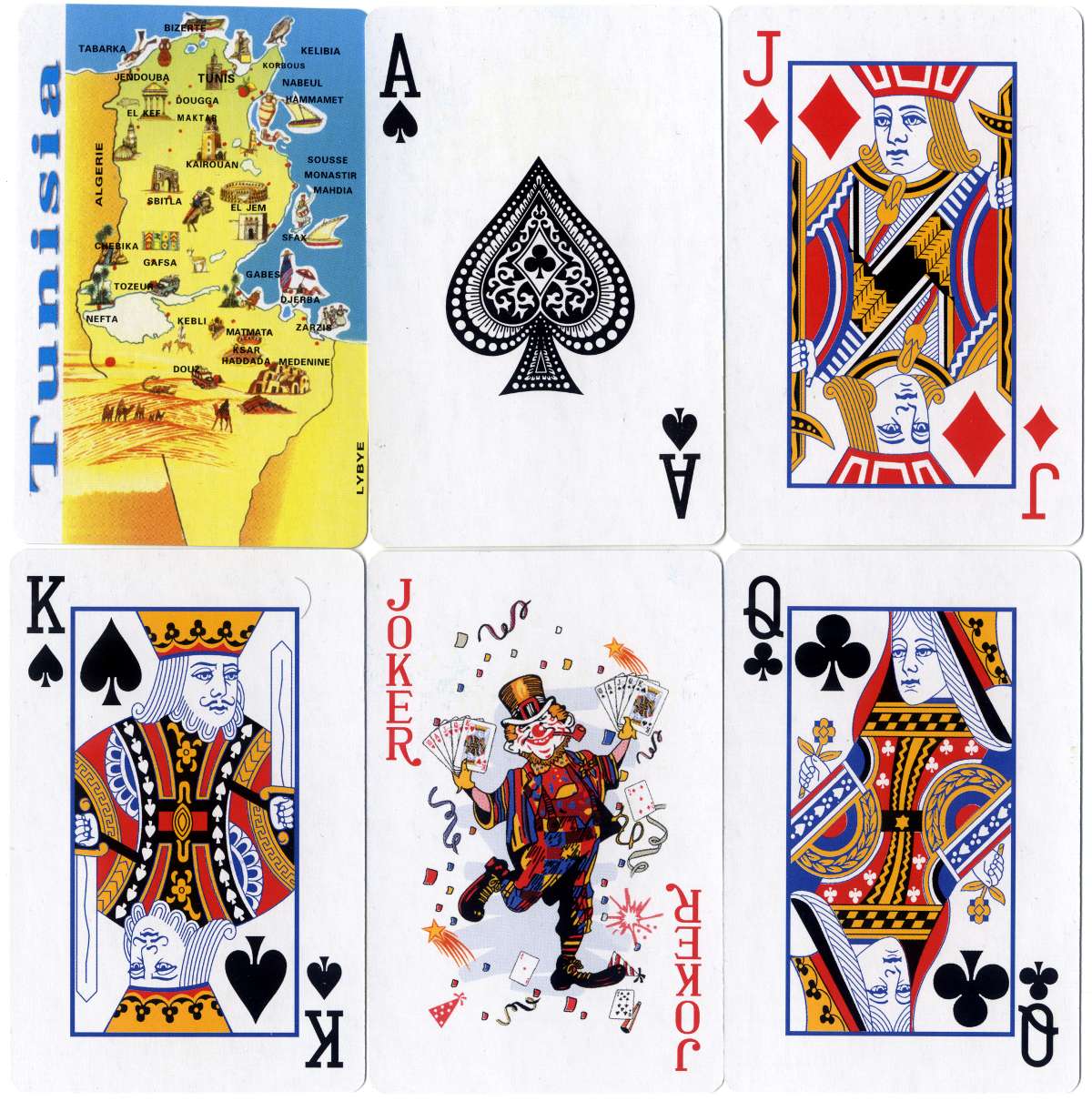
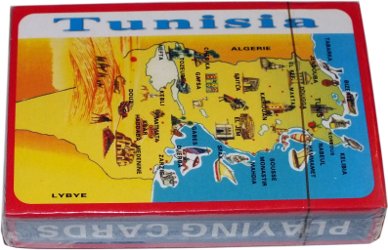
Above: box and cards from Tunisia souvenir playing cards made in China.
Reference
Cremers, Filip: Belasting is Troef, Nationaal Museum van de Speelkaart, Turnhout, 1992, p.105.

By Simon Wintle
Member since February 01, 1996
Founder and editor of the World of Playing Cards since 1996. He is a former committee member of the IPCS and was graphics editor of The Playing-Card journal for many years. He has lived at various times in Chile, England and Wales and is currently living in Extremadura, Spain. Simon's first limited edition pack of playing cards was a replica of a seventeenth century traditional English pack, which he produced from woodblocks and stencils.
Leave a Reply
Your Name
Just nowRelated Articles

Moguls, Highlanders and Merry Andrews
Discover the historic origins and evolution of card naming and quality designations like ‘Moguls’ an...

The Henry Hart Puzzle
Explore the intricate history and unique design variations of Henry Hart's playing cards, tracing th...

Âs Nas playing cards with box
Hand made cards from Persia

Âs Nas
Âs Nas type playing cards from Persia.

Tarot of the Thousand and One Nights (1001 Nights Tarot)
This tarot deck captures the idealised Eastern world's magic from the eighteenth and nineteenth cent...

Great Mogul Playing Cards
The origins of the 'Great Mogul' brand playing cards.

73: Fakes, Forgeries and Tax Evasion
When there are official taxes to pay, people will find a way to avoid paying them - often illegally....

Russian Playing Card History - From the Beginnings to 1917
An in-depth review of the history of card-playing, gambling, legislation, manufacture and taxation o...

Russian Playing Card Monopoly
The Russian Playing Card Monopoly was established in March 1798 with all revenue going to support th...

Juego de Naipes Andalusí
Andalusian playing cards designed by Marifé Montoya Carrillo with booklet by Jorge Lirola Delgado, 2...

Jeep Playing cards
Pack of cards celebrating Allied Victory in the Second World War.

72: The Ace of Spades
In standard English packs the Ace of Spades is associated with decorative designs. This is a histori...

Persian Miniatures
Persian Miniatures, made in Hungary c.1990.

66: Adverts and related material 1862-1900
Some further material relating to cards from nineteenth and twentieth century periodicals.

Burj Al Arab Jumeirah
Gold plated souvenir playing cards from the Burj Al Arab Jumeirah hotel in Dubai.

Belle Vue Gueuze
Promotional playing cards designed by Wim Simons, Belgium, 1960s.
Trending Articles
Popular articles from the past 28 days



 Your comment here. Your comment here. Your comment here. Your comment here. Your comment here. Your comment here. Your comment here. Your comment here. Your comment here. Your comment here. Your comment here. Your comment here. Your comment here. Your comment here. Your comment here. Your comment here. Your comment here. Your comment here. Your comment here. Your comment here. Your comment here. Your comment here. Your comment here. Your comment here. Your comment here. Your comment here. Your comment here. Your comment here. Your comment here. Your comment here. Your comment here. Your comment here.
Your comment here. Your comment here. Your comment here. Your comment here. Your comment here. Your comment here. Your comment here. Your comment here. Your comment here. Your comment here. Your comment here. Your comment here. Your comment here. Your comment here. Your comment here. Your comment here. Your comment here. Your comment here. Your comment here. Your comment here. Your comment here. Your comment here. Your comment here. Your comment here. Your comment here. Your comment here. Your comment here. Your comment here. Your comment here. Your comment here. Your comment here. Your comment here.